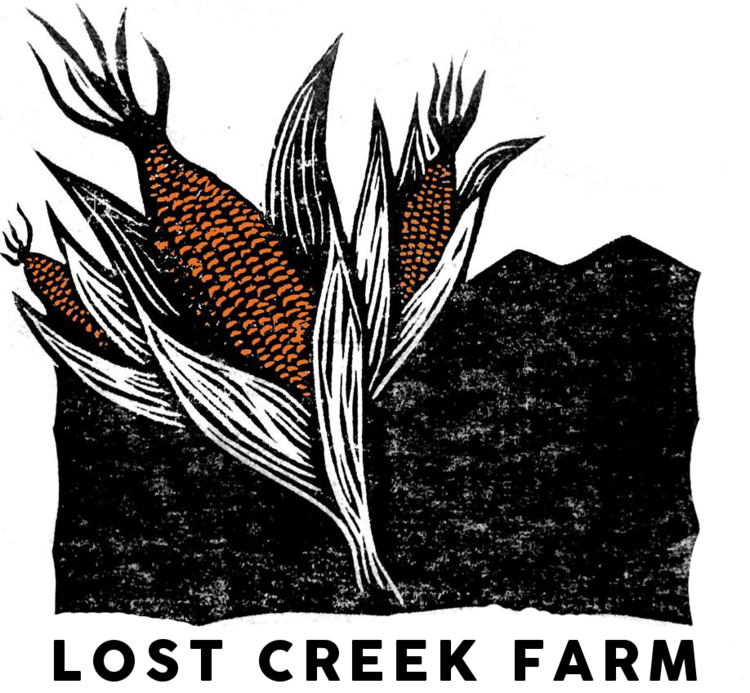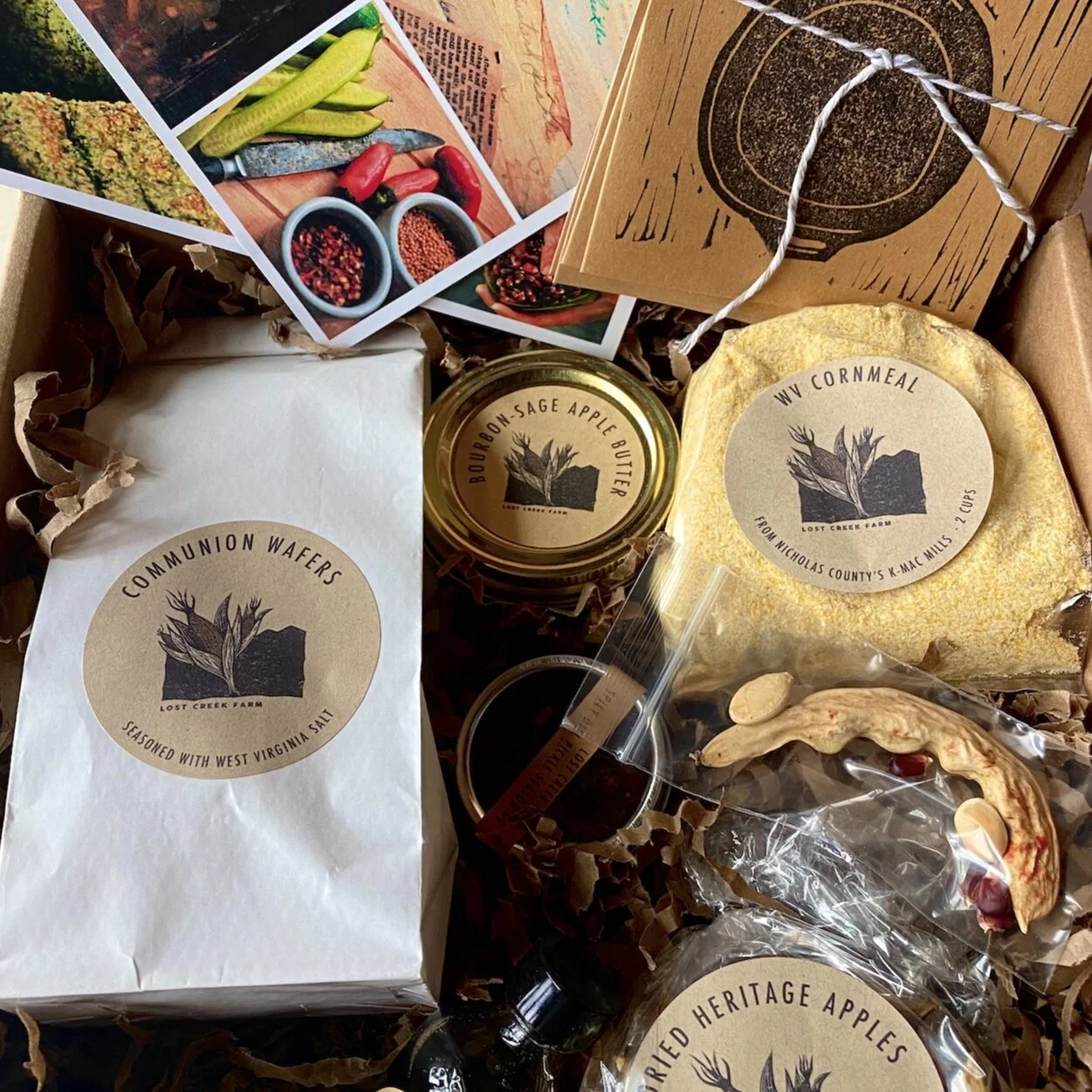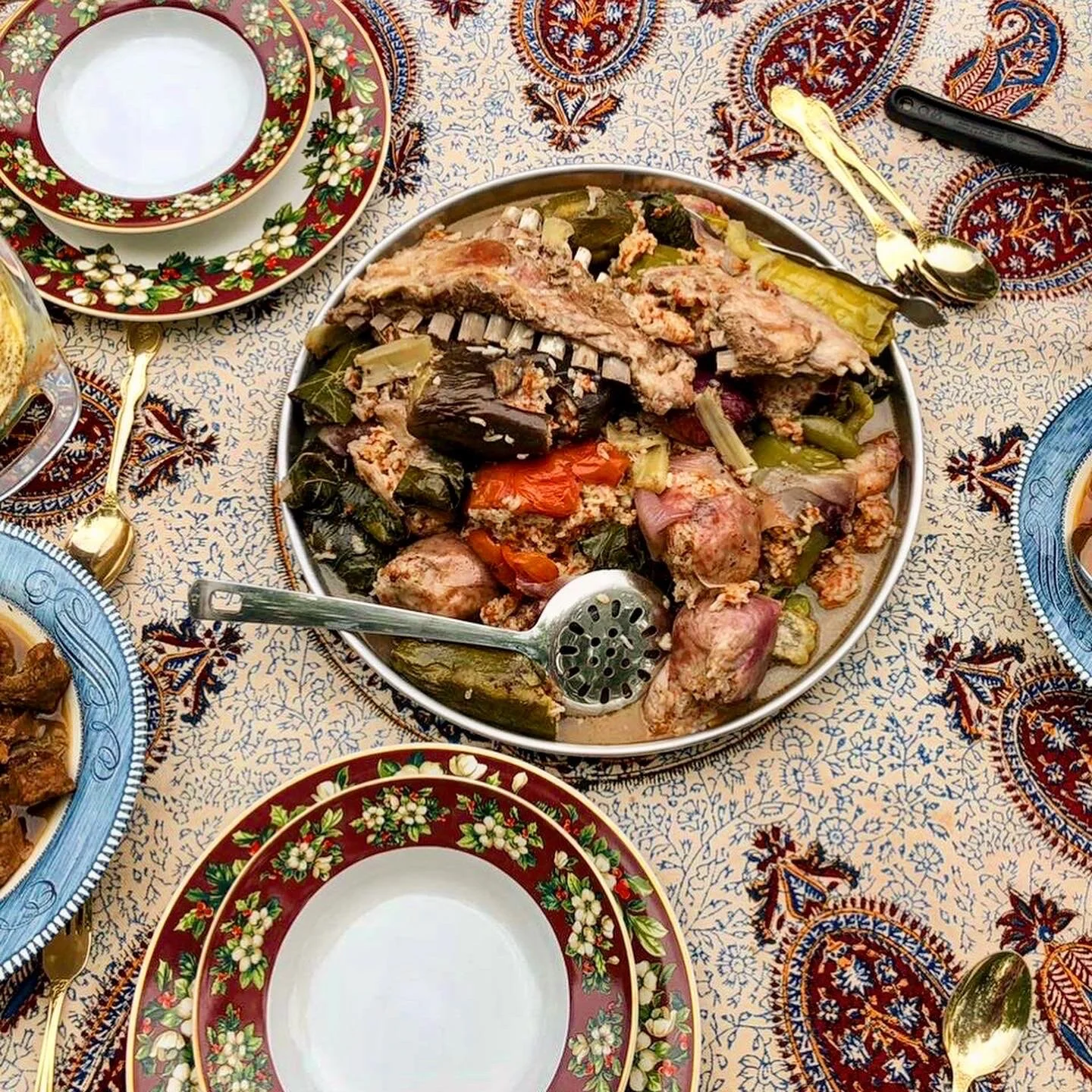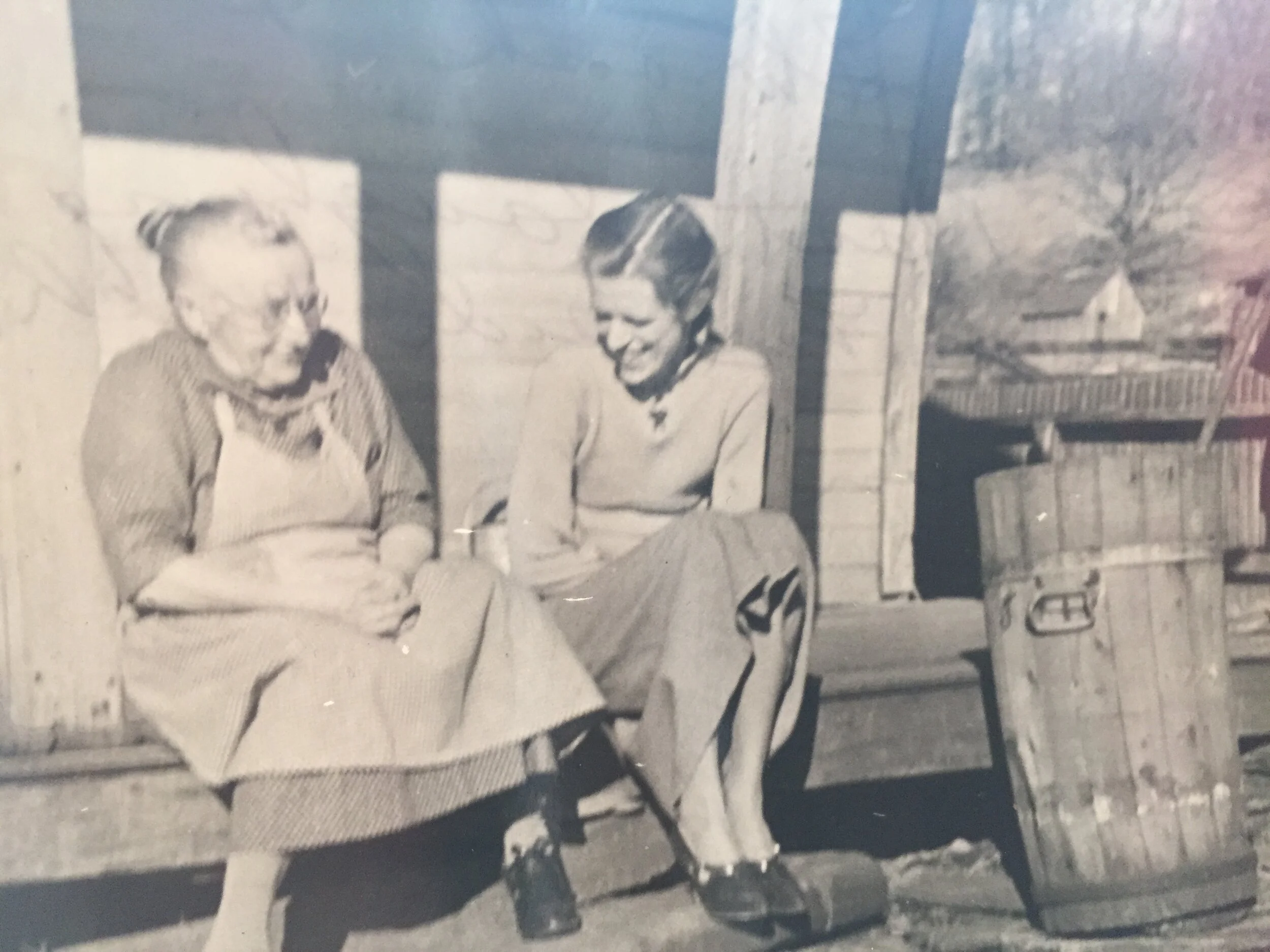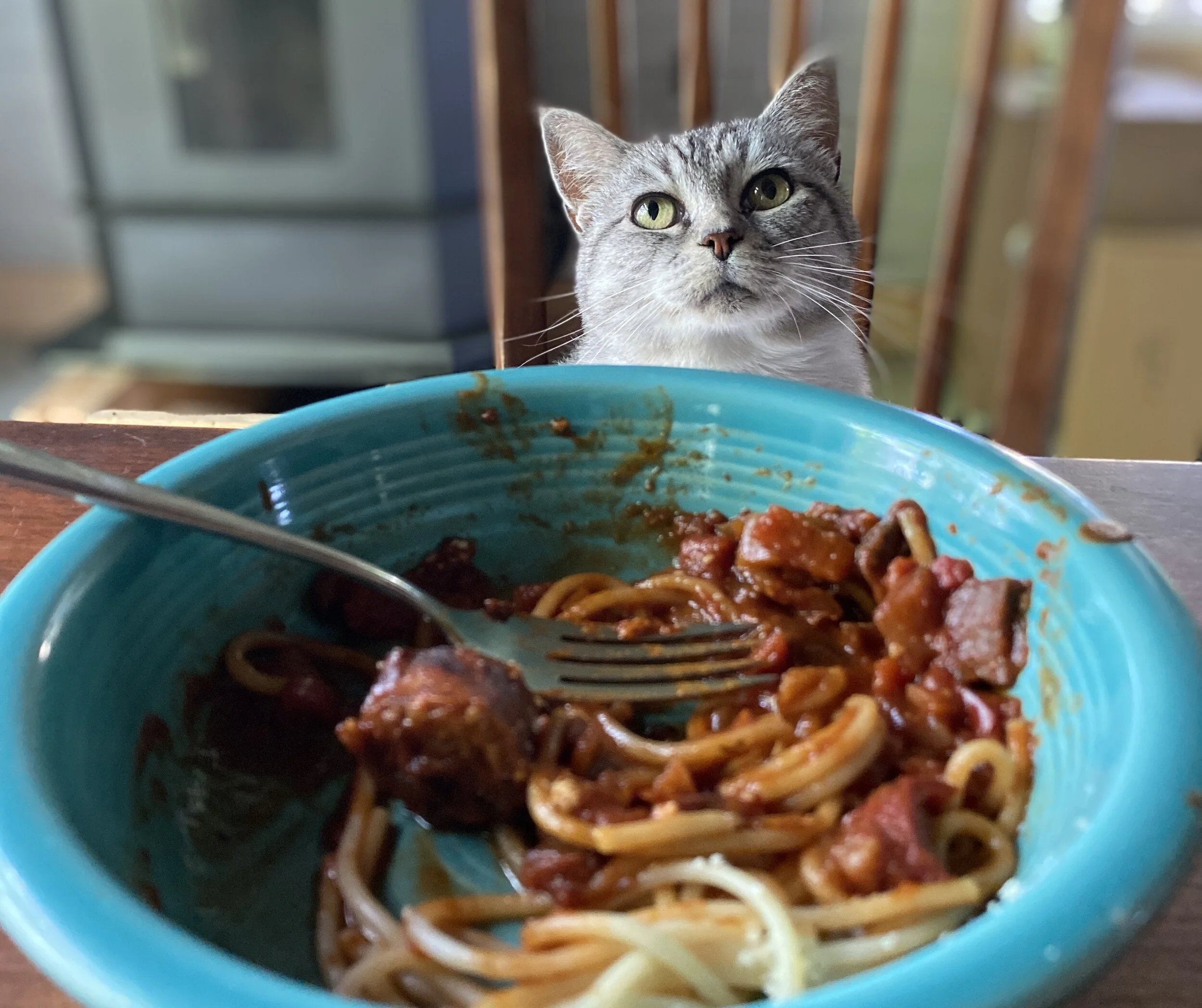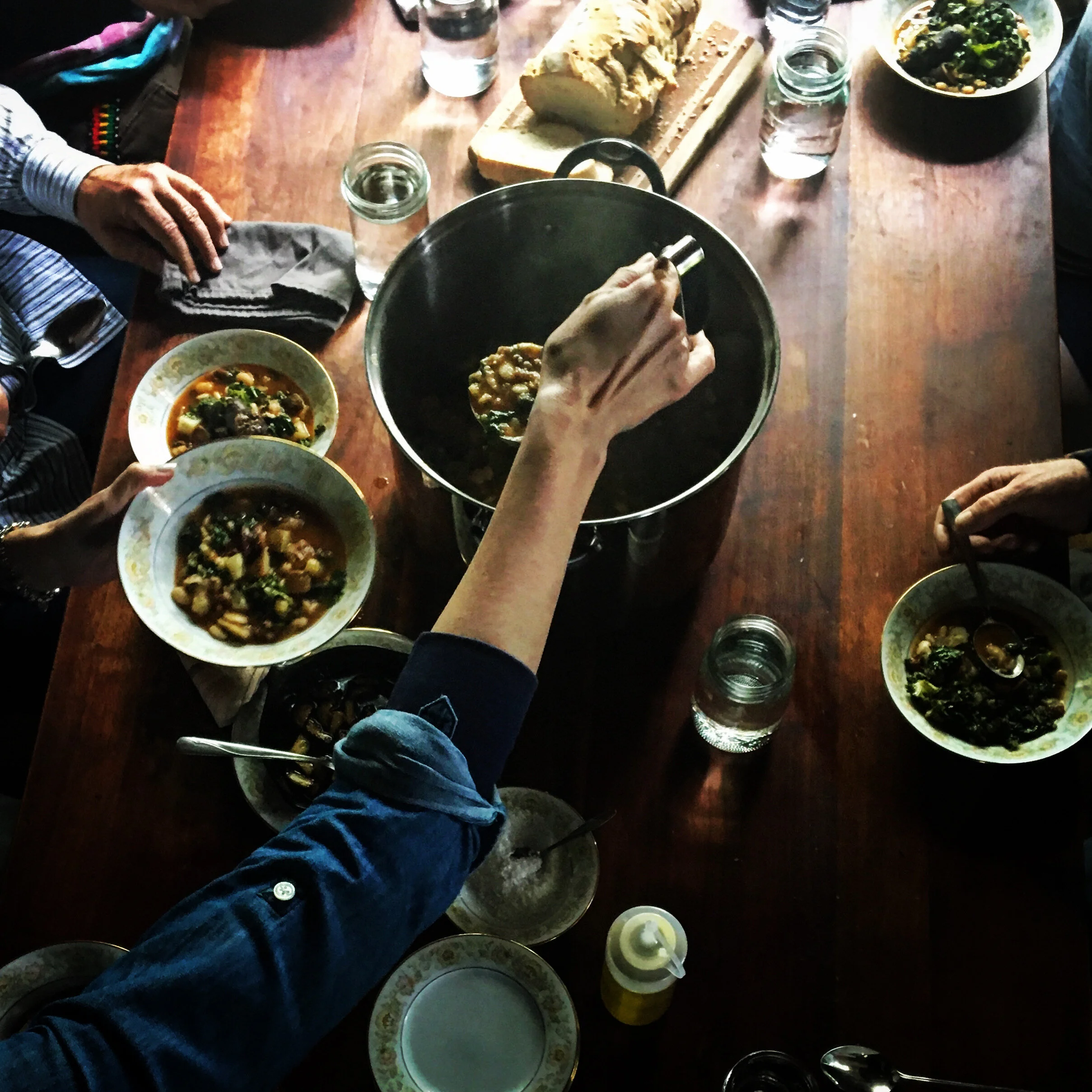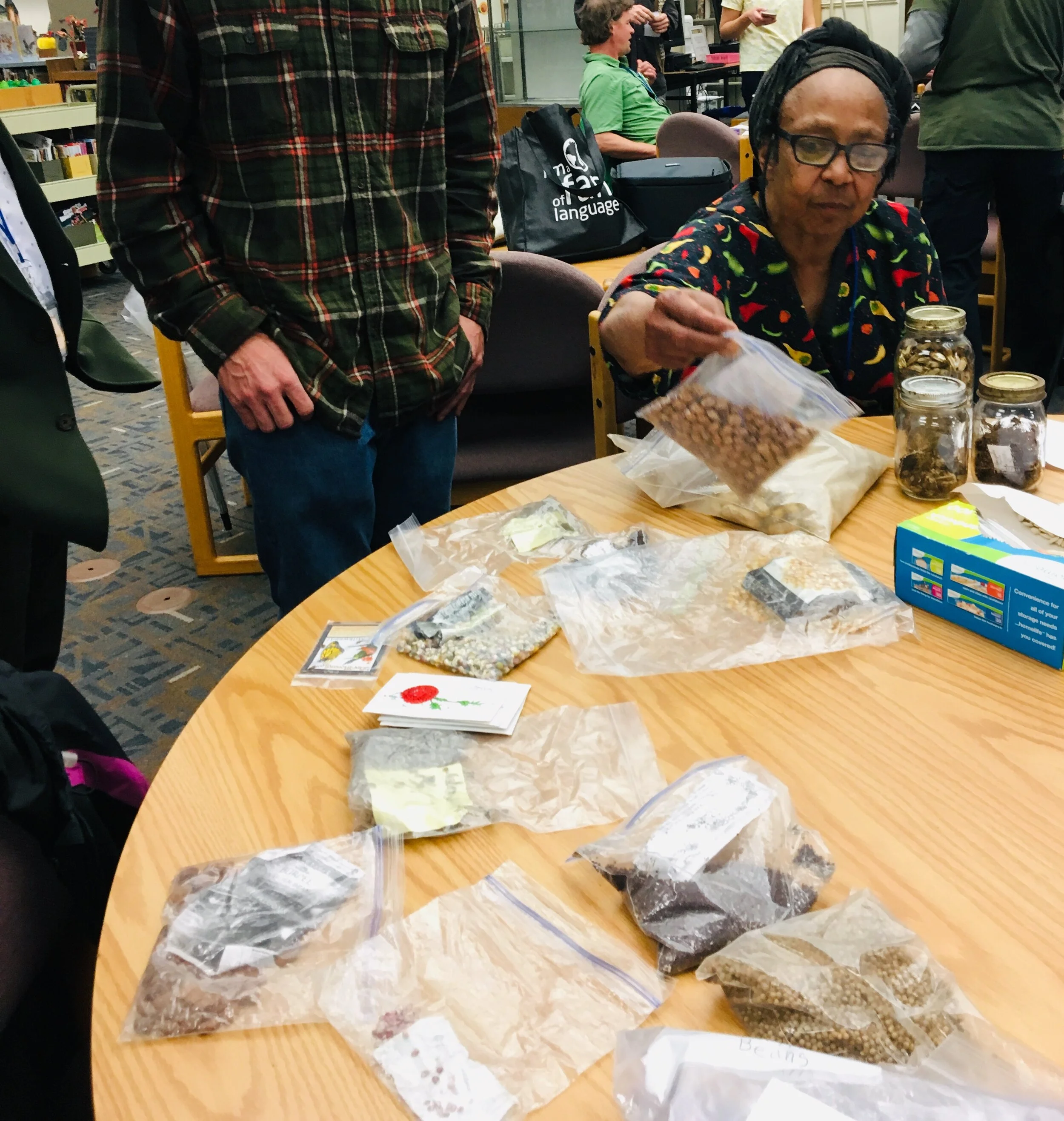SundaySupper
Greetings from Lost Creek Farm!
It’s such an honor to be part of your experience as you get to know West Virginia. We’ve been spending lots of time inside, cooking, planning, and working on our podcast, The Pickle Shelf Radio Hour. This is a perfect time to convene with others and share hopes of a fruitful new year.
Of course, we’d hoped to gather in-person, to share a meal and an evening of rich conversation. Alas, we had to change our plans; so in these uncertain times, we’ll do the best we can with what we have. It’s an ethos that drives our work and defines so many of the dishes we think of when we talk about Appalachian cuisine.
In the video to the right, we demonstrate such a recipe: Flossie Hannah’s Old Fashion Vinegar Pie. What happened when rural cooks wanted to make lemon desserts, but didn’t have access to lemons? They tapped their creative instincts, combining basic pantry staples to mimic the flavors of real citrus. Figure it out and, somehow, make it work. That’s how mountain people have always gotten by. In the spirit of recipes like vinegar pie, inspired by rural West Virginians’ knack for making do with what they have, we’ve done our best to recreate an in-person experience with a virtual Sunday supper.
We’ll talk about plenty of recipes, from Flossie Hannah’s Vinegar Pie and Aunt Floda’s Dumplings. We’ll share the story of Lebanese pickles from Charleston and the Spanish sausage made by immigrant families in our community for over a century. Most of all, we hope to disrupt common narratives, inspiring new and different ways of looking at this beautiful, complicated place through the lens of food.
Even though we are meeting with you on a Monday, we are sending you a care package to create a West Virginia-inspired Sunday supper. To us, a traditional Sunday supper is about so much more than a meal – it’s an opportunity to gather as a community. It’s about sparking a conversation, sharing knowledge and inspiration that can be passed along to others. On this page, you’ll see a few images of our ancestors whose knowledge has been passed on to us, as well as some of the folks in our community who might join us for a typical Sunday supper. These are people we collaborate with year-round to cook, hunt, garden, save seeds, and preserve food. A sense of community is critical to our work. Behind every meal we serve are dozens of farmers and producers, as well as countless others who’ve saved seeds, passed on traditions, and shepherded heritage recipes over many generations.
What’s In the Box?
Since you’re on this webpage, you’ve probably received a package from us. This box contains some specialty ingredients to make a mountain-inspired Sunday supper whenever you please:
-1 packet of Grandma Betty’s communion wafers
-1 package of WV-ground cornmeal (2 cups)
-1 bottle of shagbark hickory syrup (2 ounces)
-1 packet of dried heritage apples (1 cup)
-1 tin of spicy dill pickle mix.
We’ve also thrown in some additional surprises, including some of our hand-printed block-print notecards, a jar of our own Bourbon-sage apple butter, and a few heirloom seeds from our garden. We’ll talk more about some of these on Monday, especially the seeds. If you have some time for a primer, check out the fourth episode of our storytelling podcast, The Pickle Shelf Radio Hour, to hear more about our seeds and the people behind them.
Your boxes will also have recipe cards to help you create a full meal. Further down on this page you’ll see the full list of recipes for a Sunday supper of your own, along with some additional stories and content. We’ll be talking a lot more about these dishes on Monday. If you feel ambitious and want to try a few recipes before our discussion, feel free –– but no pressure! Our discussion won’t require you to do any cooking beforehand. At the very least, plan to enjoy the communion wafers and apple butter as a group when we are together. They’re packed with stories and make for the perfect afternoon snack, especially with some fresh farmer’s cheese from our list of easy-to-make recipes. Click the images in the list for the full recipe card, and feel free to get in touch at the button below if you have any questions in the kitchen.
recipes for a Sunday supper
When you’re ready to get cooking, here are some of our favorite seasonal recipes for a mountain-inspired Sunday Supper. Click on the images below to view recipe cards for each dish. Use some of the specialty ingredients in your box, where indicated. We’ve also put together the provided grocery list to help you find all of the ingredients you need to pull off part or all of the meal.
Grocery list: Ingredients for Sunday Supper
Starting Snacks
Grandma Betty’s Communion Wafers
These crispy, savory crackers were made by Mike’s grandmother, Betty Williams in the basement kitchen of Emmanuel Baptist Church, where elders were known to break out into song as they cooked extensive meals and baked wafers for Sunday service. We’ve included a packet of communion wafers in your box, but we still encourage you to make your own. These are incredibly easy to make, and can be enhanced with a few dried herbs, seeds, or parmesan cheese.
In the box: communion wafers with WV salt
STARTING SNACKS
Fresh Farmer’s Cheese
Mike and Amy both come from families with strong dairy farming histories. Mike’s great-great-grandparents were dairy farmers who immigrated to the West Virginia highlands from Switzerland in the 1880s. Amy’s great-grandparents operated an award-winning family dairy just down the road from present-day Lost Creek Farm. From a recipe that calls only for milk, vinegar, and salt, fresh farmer’s cheese is a quick, unfermented delicacy that’s versatile and downright delicious. Serve on communion wafers, and pair with fruit spreads, like the Bourbon-sage apple butter included in your box.
Pickled and preserved
Heritage Pickles - Some of Our Favorite Recipes
Perhaps no class of recipes better reflects the cultural melting pot of Appalachia than pickles. In our own recipe collections, there are heritage recipes for Lebanese pickled turnips, Italian pickled peppers, and Vietnamese-style pickled ramps or scallion heads. Follow the simple pickle recipes on the included card to make some of our favorites, and use the spice mix in your box to make a small batch of spicy dill pickles.
In the box: Spicy dill pickle mix
FROM THE FIELD AND FOREST
Fresh Greens Salad with Hickory Bark Dressing
From late-February through the end of March, we’ll be making maple syrup here at Lost Creek Farm. During the rest of the year, when we want to achieve similar flavors from the forest, we’ll make a sweet syrup by boiling flakes of bark from shagbark hickory trees. The two-ounce bottle of shagbark hickory syrup in your box is just enough to make a jar of hickory bark dressing. Pair with fresh salad greens or a variety of wild greens. Some of our favorite foraged salad greens include dandelion, purple dead nettle, chickweed, and purslane.
In the box: Shagbark hickory syrup
THE MAIN COURSE
Aunt Floda’s Chicken and Dumplings
Each spring at Middle Run Church in Braxton County, a picnic was held to mark Decoration Day, the holiday which would later become known as Memorial Day. A grand feast was comprised of dozens of homemade entrees and sides, fresh breads, canned goods, and a host of desserts. But according to family legend, one dish stood above the rest: Aunt Floda’s Chicken and Dumplings. This recipe from Mike’s great-aunt Floda Craft remains a favorite of ours today.
ON THE SIDE
Harvest Season Chow Chow
At the end of the fall harvest season, when dozens of jars go on the shelves for winter, there are always some “scrap” vegetables leftover: a few green tomatoes, several turnips, a few handfuls of peppers. These vegetables are often combined to produce a bright, tangy, sweet and sour pickled relish commonly known as chow chow. Recipes for chow chow can change drastically from year to year, depending on what’s available. Pair with fried chicken or fried green tomatoes, serve as a stand-alone side dish, or to accompany hearty cooked greens.
on the side
Braised Garden Greens with Mountain Apples
In late-fall, the wild apple trees here at the farm and in orchards throughout West Virginia produce an abundance of fruit. Apples are traditionally sliced and dried, often smoked, for long-term preservation and use in cooking throughout the year. Dried apples are used in hand-pies and apple stack cakes, as well as plenty of savory dishes. One of our favorite uses of dried apples is in a hearty skillet of braised autumn greens. Late-season kale, chard, collards, or turnip greens are the perfect match for apples. For some extra apple flavor, we like to add a splash of fresh-pressed apple cider.
In the box: Dried heritage apples
bread for THE TABLE
Amy’s Cast Iron Cornbread
One of the crops we most look forward to growing and harvesting each year is heirloom Bloody Butcher and Hickory Cane corn, storied varieties grown from seed handed down to us by family and friends. Use the West Virginia-ground cornmeal included in your box to make a pan of cornbread to share. Our version of cornbread isn’t sweet, but matches up well with sweet syrups and fruit spreads.
In the box: WV-ground cornmeal
Surprising and SWEET
Flossie Hannah’s Vinegar Pie
Among the many recipes amassed in our farmhouse in the early 1900s was Old Fashion Vinegar Pie, clipped from a local newspaper, The Clarksburg Exponent. Vinegar pie is a classic example of the ingenuity of rural home cooks. During a time when lemons were hard to come by or prohibitively expensive–or, most likely, both–resourceful home cooks tapped the alchemic powers of vinegar and nutmeg to mimic lemon flavors almost precisely.
VIDEO: Mike and Amy make Old Fashion Vinegar Pie
